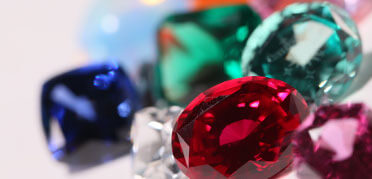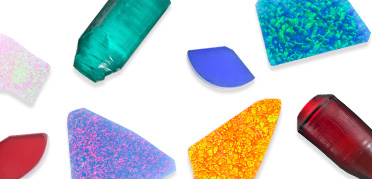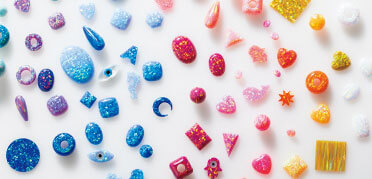Jewelry Glossary
-
K
-
K18 Green Gold
Gold alloys are made of 75% pure/fine gold and 25% by alloy metals. In order to make the greenish-gold color, pure silver content needs to be more than 70% and copper to be less than 30% of the 25% alloy metals.
-
K18 Pink(Rose) Gold
Gold alloys are made of 75% pure/fine gold and 25% by alloy metals. In order to make the pinkish gold color, about 3% of palladium and an extremely small amount of zinc is added as a deoxidizer to a pure silver and copper with a ratio of about 2:8.
Pink gold is popular in Japan, but it is difficult to repair/rework jewelry made by pink gold because pink gold is easily broken. -
K18 Red Gold
Gold alloys are made of 75% pure/fine gold and 25% by other metals. In order to make a reddish-gold color, copper content needs to be more than 70% and pure silver to be less than 30% of the 25% alloy metals.
-
K18 Yellow Gold
K18 indicates gold alloys made of 75% pure/fine gold and 25% alloy metals. Of the 25% split, alloy metals use pure silver and copper equally, and their color looks yellowish gold.
In Europe, gold 750 indicates K18. -
K24
In Japan, K(karat) is usually used as a measure of the purity of gold, and K24 means pure/fine gold.
Some countries such as Europe don't use K (1/24) as a measure, but they use permillage (1/1000). -
Kihei(Curb) Chain
A kihei (curb) chain is one of the basic forms of chain. This chain is made by twisting the ring of a cable chain at a 90 degree angle and cutting/hitting it on each of its two sides. Depending on the number of flat surfaces, there are two sides, but there are also six-sided and eight-sided kihei chains. There is also a "double kihei," with two rings connected to one ring.
-
Kiriko Chain
A "kiriko" chain is a masterpiece Japanese-style chain. This chain is made by cutting a bar-shaped frame into a diamond or other shape.
-
Knoop Hardness
Knoop hardness is measured by pushing the tip of a diamond to the gem surface. It is called knoop hardness, developed by Dr. Nug at the National Metrology Bureau in the USA.
-
KPCS (Kimberley Process Certification Scheme)
Kimberley Process Certification Scheme is a certification system that is established by "World Diamond Council," which is an organization formed through partnership with diamond producing countries. Thanks to this system, the origin of rough stones can be certified in a bid to push conflict diamonds out of the market.
-
Kunzite
Its said that kubzute's pink color makes people feel refreshed. In recent years, there are many deep pink kunzites produced through irradiation. Kunzite is known as a troublesome gemstone to process among gemcutters. Its cleavage is very strong so it is easily broken or chipped. It also has pleochroism so it is usually cut into a step cut to be able to enjoy beautiful colors from the table of kunzite.
[Moh's hardness: 6] [Mineral species: Spodumene] -
Kurocho Pearl
Kurocho pearl's full-scale production started in Tahiti in the 1970s. At one point, there were so many kurocho pearls due to excessive production, and the price crashed off. Due to the color of the lip inside the shellfish, not only black but also reddish-green black, which is called peacock color can be collected.
[Moh's hardness: 2.5-3] [Organic matter: Cultured pearl]" -
Kyanite
Kyanite is a mineral whose color is indigo blue. For that reason, it was named from the Greek word, "Kyanos," which means dark blue. It shows blue by containing iron and titanium, but orange kyanite containing manganese from Myanmar has been discovered in recent years. It is a gemstone that is very difficult to polish due to its hardness depending on the axis and strong cleavage.
[Moh's hardness: 4] [Mineral species: Kyanite] -
Kyoto Opal
"The colored opal brand which is exclusive to Kyocera. Kyoto Opal is made of 20% resin and 80% silica and preserves the amazing play-of-color. By adding polymer, its strengthened and realized various color options.
Please click here to learn more about Kyoto Opal."
-




